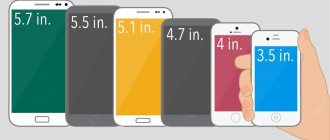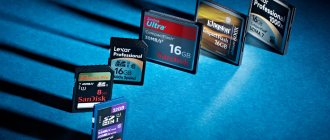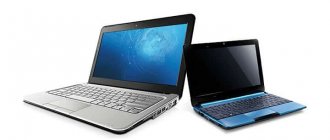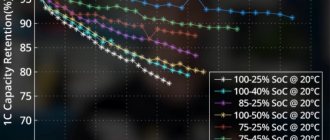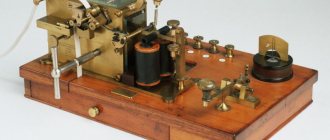Specifications
The components of the gadgets are the same. There are models on the market with both basic, medium and powerful hardware. Thanks to this, you can choose something worthwhile. But there are differences regarding the processes. The following are used for smartphones:
- Qualcomm Snapdragon;
- MediaTek;
- Exynos.
Tablets use:
- Qualcomm Snapdragon;
- MediaTek;
- Intel.
Apple uses its own processors.
If the question is the clock frequency and number of cores, there are no differences as such.
Smartphone: device, capabilities
A smartphone is a mobile phone whose main function is to make calls and exchange messages via a SIM card. The models are equipped with an operating system and have the same functions that are present in tablets.
REFERENCE! A smartphone can be considered as a regular phone, with which you can check email, use instant messengers and perform many functions typical of a mobile computer.
Features of smartphones
- Availability of slots for one or two SIM cards.
- Support for cellular networks with the ability to connect to 3G mobile Internet, and in the latest models - 4G.
- Screen diagonal varies from 3.5 to 10 inches.
operating system
The OS is selected based on the person’s preferences. Android can be supplied to both types of gadgets, and there is no difference in the functionality of both types of devices. But when compared with Windows, there are differences.
The fact is that Windows 8 and 10 were developed for the tablet. And therefore, according to people’s reviews, it is better to work on them, since the size of the smartphone screen is not enough to carry out operations comfortably.
Mobility
Yes, I think that two gadgets are more convenient to use than one. If I'm going to buy bread, go to the supermarket or go to the park, I don't need distractions like social media or a bunch of notifications. If the trip involves the opportunity to work, you can always take a tablet with you, on which it will be much more convenient to do everything you need than on the iPhone screen.
It is enough to clearly divide the responsibilities between the phone and the tablet, and before each exit from the house you will understand which of them will be useful and which can stay at home.
Power
Another criterion by which a gadget is chosen. Tablets that cost 15 thousand have a 4-core processor with a power above 2 GHz, and a RAM capacity of up to 3 GB. A smartphone for the same money has the same power.
If we compare the hardware, the differences between the gadgets will be as follows:
- The tablet has an excellent processor, so this option is suitable for gamers. It runs games with good graphics.
- The internal memory of a tablet is usually larger than that of a smartphone.
- Large memory cards are used, for example 64 or 128 gigabytes.
Smartphone and tablet: main differences
If we analyze the differences between smartphones and tablets in a global user sense, then in terms of functionality between them we can trace the following difference:
- A smartphone is a phone with a variety of functionality similar to a personal computer. One smartphone embodies a cellular communication device, an Internet access point, a gaming area, a library, a mini-cinema and an audio player.
- A tablet is a mini-computer in which the communication function comes second.
Question of price
When deciding which is better to choose: a smartphone or a tablet, the user studies the price tags for the gadget for a long time and in detail. Nowadays the mobile device market offers a wide range of prices. Whether you choose a tablet or a smartphone, a model can be found within 10 thousand or more than 50 thousand rubles. Cheap tablets, about 8-9 thousand, are not always powerful and reliable. While for the same money you can find a good productive smartphone.
Other Fly smartphones All Fly phone models can be found in our online store.
Battery
Since a tablet is larger than a smartphone, it requires a large battery. Thanks to this, it turns out to gain in part capacity. Therefore, it works twice as long as a smartphone on a single charge.
But in most cases, the differences in operating time are insignificant, because the larger the screen diagonal, the faster the battery drains. Therefore, by starting different batteries you can achieve identical operating times.
The smartphone has the advantage of having a removable battery. If the latter breaks, it can be replaced (just buy a new one and put it in place of the old one). The tablet has a built-in battery, and if it breaks, you will have to go to a service center and pay for the services of a technician.
Ease of use for calls, for using the Internet
Looking through catalogs of smartphones and tablets, we often look for the most comfortable and convenient model for some of our own purposes. At the same time, the goals may be different, and sometimes we combine several requirements for the same gadget. Let's figure out which device will be more suitable for calls, because, as we found out, you can make calls from both a smartphone and a tablet. In this matter, the dimensions of the device are extremely important, because we need to hold it to our ear with one hand, so most often compact smartphones are more comfortable. However, in this case, the tablet can be used using a headset.
We also use our gadgets for the Internet. We read information on websites, watch videos online, and so on. In this case, we are more interested in the large screen sizes that a tablet computer has. Thus, both devices, a smartphone and a tablet, are more convenient for certain purposes.
Photo and video shooting
Camera performance is the main parameter that is an advantage of a smartphone. A modern smartphone has high-quality multi-lens optics, a photosensitive matrix and good software. Even cheap options often have autofocus and flash; the pictures become better quality than those taken with a camera.
The camera on the tablet is not as good. It is rather intended for video communication. It is unlikely that you will be able to find any settings in the tablet camera settings. And autofocus is missing in almost all versions of tablets.
If you compare photos taken with a tablet and a smartphone, the latter have much higher quality.
Progress that brings devices closer together
If you look into history and omit some conventions, you can say that the tablet appeared as a more compact version of the computer. Or, to be more precise, a laptop. It was the appearance in 2002 of the Microsoft Tablet PC hardware and software platform that can be considered the starting point for the development of tablet devices. And that's why tablets are sometimes called "tablets."
The LCD screen became an interactive touch input/output device and therefore the need for a push-button keyboard was eliminated. I think this is a defining indicator for a tablet. After all, if you add keyboard to its modern model, then the “tablet” turns into a laptop.
Smartphones have gone through a longer evolutionary path, which essentially began with the advent of mobile phones. After all, compared to conventional stationary models, they had a significant range of additional functions. Which already allowed them to be called smart phones - smart phones.
But the development of the hardware platform of such devices and the widespread use of the Internet in mobile networks prompted manufacturers to create the most convenient device for communication, close in its functions to a computer. This is how the class of communicators appeared. A distinctive feature of which was the presence of a full keyboard, an enlarged screen and its own operating system. A striking example of this can be called the Nokia 9000 series models, which appeared in 1996.
The key points in the development of tablets and smartphones were:
- Creation of high-quality, relatively inexpensive touch screens (first resistive and then capacitive);
- The development of “branded” operating systems iOS and Windows mobile, as well as the emergence of open-source telephone systems Symbian and Android;
- The emergence of a huge number of applications for different OSes, which can significantly expand the functionality of devices;
Games
Some people buy gadgets specifically for gaming. Such people can be advised to use a device with a powerful processor and a large amount of RAM.
Good image display is important. Therefore, the device must have good resolution. Usually in such cases, medium and expensive tablets are chosen. The smartphone is also suitable for gaming. But it is inconvenient due to the size of the screen; small details are not visible on it.
Note! If you are a fan of simple games, such as arcade games, logic games or runners, you can safely choose a smartphone. The characteristics are enough to play similar games.
Screen size and overall dimensions
The screen diagonal of the tablet ranges from 7 to 12 inches. With a high-resolution display on the tablet, it is convenient to watch movies, videos, read e-books, digital newspapers and magazines, surf the web, draw in design programs and play mobile games.
Take any modern smartphone and you will see that in nine cases out of ten you will have in your hand a gadget with a screen diagonal of at least 5 inches. Smartphones with a diagonal of 5.5 inches are especially popular among users. The gadgets are called phablets or tablet phones.
On the 5.5-inch screen, you can easily browse websites on the Internet, play games, work with various applications, read books and watch movies, and work with documents.
The screen diagonal is related to the dimensions of the gadget, and therefore ease of handling and transportation. A tablet, be it square or rectangular, can only fit into a bag or backpack. To use it you need a surface or a special folding case. You have to hold it with both hands, which may not always be convenient, for example, in transport or on the street.
A smartphone with a screen diagonal of 5.2 to 5.5 inches can be easily held with one hand. Interface elements are within the reach of the thumb. The smartphone is compact: it can be put into a pocket, case or holster, or attached to a special holder on the forearm during fitness classes.
If the smartphone does fall out of your hands, repairs will cost much less than for a tablet.
Watch video
Regardless of display resolution, a tablet is better suited for watching videos and movies than a smartphone. You can see more details on a large screen than on a small one.
However, the final quality of the “picture” is influenced by the screen resolution. The higher it is, the better. The optimal screen resolution of a device intended for watching movies and videos is Full HD - 1920x1080 pixels. You can do more, but this will lead to faster battery drain.
If we talk about specific screen manufacturing technologies - IPS, TFT, AMOLED - then they provide approximately the same picture. Only the color rendering and overall color tone of the screen changes. AMOLED is probably best suited - but it is quite rare in tablets.
In addition, there is another screen manufacturing technology - Retina. It can be found on Apple tablets. Such screens provide excellent color rendition and maximum image smoothness.
How to choose a tablet with a SIM card: main criteria
In principle, the criteria for choosing a gadget with a SIM card are almost the same as for a regular tablet.
You should pay attention to:
- The screen diagonal is selected according to your needs and your vision. Now it makes almost no sense to buy a model with a diagonal of 7 inches, since there are already smartphones with a diagonal of 6. But a 10-inch tablet is perfect for watching movies, playing games, working and other functions. If you are more accustomed to counting in centimeters, then one inch is 2.54 cm.
- Resolution and aspect ratio – if you are going to use the device only for watching movies, then you can, in principle, buy a model with a 16:9 screen aspect ratio. But it’s better to take a 3:4 screen, as it is more versatile. Resolution affects the clarity of the picture, so under no circumstances take a 10-inch tablet with a resolution of 640x320, the image quality on it will be simply disgusting. The minimum for 7 inches is 1024x600. It’s better not to save on your eyes, and take a model with FullHD resolution, that is, 1920x1280.
- The case material is plastic, which feels more comfortable in the hand, but is easier to damage. Metal is stronger, but heavier and weakens wireless reception. Also, the plastic heats up more during operation of the gadget, which can be a plus in cold winters, but, in general, is a minus.
- The battery is the most important feature for those who spend a lot of time with the tablet away from an outlet. The larger the battery capacity, the longer the device will work, but there are a number of caveats. Firstly, the use of a 3G module, GPS and a number of applications “eats up” the charge very quickly. Secondly, the battery discharges faster in the cold. Fortunately, many models support so-called economical and super-economical modes, allow you to disable the most energy-consuming functions and generally take care in every possible way to conserve charge. If the battery capacity is still sorely lacking, then you should get a Power Bank. By the way, over time, the battery loses its ability to hold a charge, so if you want to be able to replace it with a fresh one, choose a model with a removable battery.
Judging by the reviews about choosing a tablet, these are the criteria most users pay attention to when purchasing. But there are a number of other parameters that are of great importance
The screen is the determining factor when purchasing
The first thing that catches your eye is the diagonal of the screen. A tablet is physically larger than a smartphone. Therefore, the first device has wider scope for work and entertainment:
- with a seven-inch diagonal (and higher) it is more convenient to view web pages, scale them, group them, “collect” them into a feed;
- on the big screen you get more pleasure from watching movies, cartoons and other videos;
- edit photos, presentations, messages easier;
- The larger on-screen keyboard is easier to use.
Although it is still better to work fully on other devices. What is the difference between a tablet and a laptop, for example.
Smartphone manufacturers are trying to increase the size of screens. The latest models come in five inches. But this is less than 7, 8 or 9 inches. But the smartphone fits easily into your pocket and looks more natural on your face during a mobile conversation.
Screen size is not the main difference between a smartphone and a tablet. The difference is also in resolution:
- Android-based smart phones support a maximum of 800x480 pixels;
- the same Asus Transformer Pad Infinity has a resolution of 2560x1600 (and for tablets this is not the limit).
What gives high resolution?
Firstly, the picture is more pleasant - the eyes get less tired when looking at the screen for a long time.
Secondly, more information fits on the tablet screen. You can use it more rationally by creating shortcuts, widgets, and bookmarks.
Thirdly, fine details are displayed more clearly at high resolution. This indicator is important when playing the same strategic games.
Some consumers joke: “Big screen means big problems.” With regard to tablets, this statement is partly true:
- they are heavier than smartphones;
- they are inconvenient to use as a cell phone;
- the screen gets dirty quickly and is easily damaged;
- You will have to pay a considerable amount to repair the front part of the device.
Working with application software
What is better to buy to work with specialized programs? Smartphones and tablet PCs are widely used by users for work.
With these gadgets you have the opportunity to:
- Promptly conduct business correspondence using postal services;
- Manage business and take notes;
- Work with office programs to create documents;
- Create presentations and tabular reports;
- Work with cloud storage and gain access to general editing of the same document and other features.
If you often work with documents, it is better to use a tablet for this purpose. Firstly, it is able to fit more information on the screen. Secondly, the text is easier to read, and working with reporting becomes simpler.
A tablet PC can easily be converted into a small laptop. To do this, you can connect a special keyboard and a manipulator to it.
A smartphone is not entirely suitable for working with office software, although there is a lot of software for displaying and working with documents on phones.
Working with business correspondence and conducting other matters from a device that has a small screen is a rather complex process.
Reading books
The large screen of a tablet is better suited for reading e-books than the relatively small display of a smartphone. People with various visual impairments will especially like this - you can set any desired character size, and one page will still contain enough information.
However, a smartphone is much more mobile and lighter. That is why it is more convenient when it comes to reading for many hours. Due to their large mass, tablets make your hands get tired of holding them. Smartphones cause this unpleasant sensation much less often.
But for reading books at home, as well as for short trips, it is still better to purchase a tablet.
